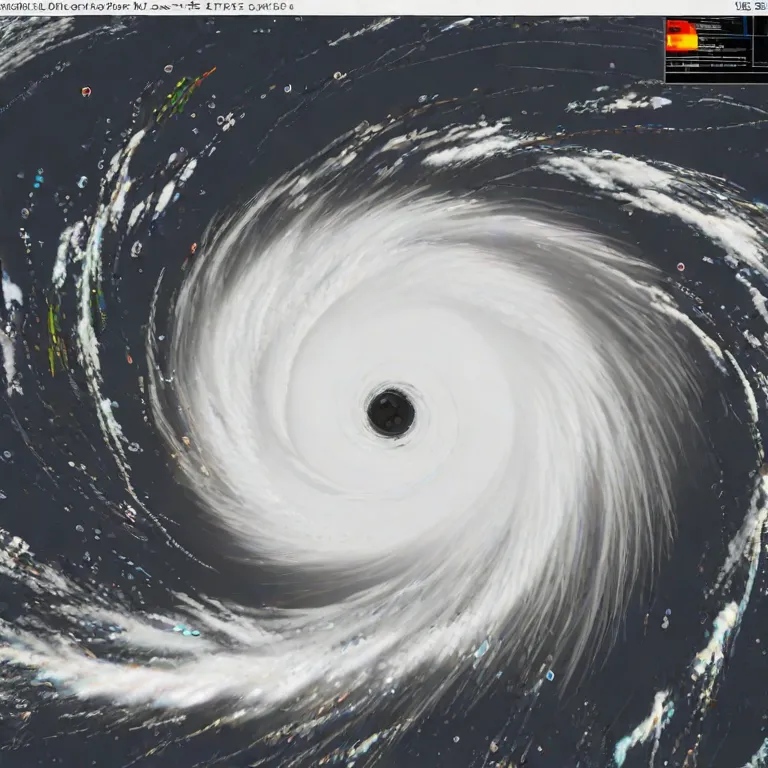
By Saeed Mirshekari
October 9, 2024


Access O'Mentors
Top Data Scientist Mentors from Fortune 500 Companies excited to help you out 1-on-1!
1️⃣ Explore freely
→
2️⃣ Apply confidently
→
3️⃣ Pay securely
→
4️⃣ Book instantly
The Power of Data Analysis in Predicting and Minimizing the Impact of Typhoons
Typhoons, also known as hurricanes or cyclones depending on the region, are among the most devastating natural disasters on Earth. These powerful tropical storms, characterized by strong winds and heavy rainfall, pose significant threats to coastal communities, infrastructure, and economies. However, advancements in data analysis techniques have enabled scientists to better understand typhoon behavior, predict their paths and intensity, and minimize the loss of life and property damage. In this article, we will delve into the statistics of typhoons and explore how data analysis is revolutionizing our ability to forecast and mitigate their impact.
Understanding Typhoon Statistics
Before delving into the realm of data analysis, it's essential to grasp some key statistics surrounding typhoons:
-
Frequency: Typhoons are not uncommon phenomena, especially in regions such as the Western Pacific Ocean and the Indian Ocean. On average, the Western Pacific sees around 25 typhoons annually, with varying degrees of intensity.
-
Intensity: Typhoons are categorized based on their maximum sustained wind speeds. The Saffir-Simpson Hurricane Wind Scale, commonly used in the Western Pacific, classifies typhoons into five categories, ranging from Category 1 (74-95 mph) to Category 5 (157 mph or higher).
-
Path and Duration: Typhoons can travel vast distances over the ocean, sometimes lasting for weeks. Their paths are influenced by a myriad of factors, including atmospheric conditions, ocean temperatures, and geographical features.
-
Impact: The impact of typhoons can be catastrophic, causing widespread flooding, landslides, storm surges, and infrastructure damage. The socioeconomic consequences can be severe, leading to loss of life, displacement of populations, and economic disruptions.
The Role of Data Analysis
Historically, predicting the path and intensity of typhoons has been a challenging task fraught with uncertainties. However, advancements in data collection methods, computational power, and statistical modeling techniques have transformed our ability to analyze and forecast these storms. Here's how data analysis is revolutionizing typhoon prediction and mitigation efforts:
1. Data Collection
Modern weather forecasting relies on vast amounts of data collected from various sources, including satellites, weather stations, buoys, and aircraft reconnaissance. These data provide crucial information about atmospheric conditions, sea surface temperatures, wind patterns, and other parameters that influence typhoon development.
2. Statistical Modeling
Data analysis techniques, such as machine learning algorithms and numerical weather prediction models, play a pivotal role in forecasting typhoon behavior. By analyzing historical typhoon data and atmospheric patterns, scientists can develop predictive models that estimate the future trajectory, intensity, and potential impact of these storms.
3. Early Warning Systems
Timely and accurate predictions are essential for issuing early warnings and implementing evacuation plans in vulnerable areas. Data analysis enables meteorologists to generate probabilistic forecasts, highlighting the range of possible outcomes and associated uncertainties. This information allows authorities to make informed decisions and mobilize resources to mitigate the impact of impending typhoons.
4. Risk Assessment and Preparedness
Data analysis also facilitates risk assessment and preparedness measures to enhance community resilience to typhoon-related hazards. By analyzing historical typhoon tracks, storm surge data, and vulnerability maps, stakeholders can identify high-risk areas and prioritize investments in infrastructure, disaster response capabilities, and public awareness campaigns.
5. Climate Change Adaptation
As climate change continues to alter global weather patterns, understanding the relationship between climate variability and typhoon activity becomes increasingly important. Data analysis allows scientists to discern long-term trends in typhoon frequency, intensity, and spatial distribution, helping policymakers develop adaptive strategies to mitigate the impacts of climate change on vulnerable communities.
Case Studies: Data-Driven Approaches in Action
Several real-world examples demonstrate the effectiveness of data-driven approaches in predicting and mitigating the impact of typhoons:
1. Typhoon Haiyan (2013)
Typhoon Haiyan, one of the most powerful tropical cyclones on record, devastated the Philippines in 2013, causing widespread destruction and claiming thousands of lives. However, advances in data analysis and early warning systems enabled authorities to evacuate millions of people, reducing the loss of life compared to previous similar events.
2. Typhoon Yolanda (2013)
In the aftermath of Typhoon Yolanda (Haiyan), data analysis played a crucial role in coordinating humanitarian aid and reconstruction efforts. Geospatial analysis techniques were used to assess the extent of damage, identify priority areas for assistance, and optimize resource allocation to affected communities.
3. Typhoon Mangkhut (2018)
Typhoon Mangkhut, known as Ompong in the Philippines, highlighted the importance of data-driven risk assessment and preparedness measures. Advanced modeling techniques enabled meteorologists to accurately predict the storm's path and intensity, allowing authorities to pre-position emergency supplies, activate evacuation plans, and minimize the impact on vulnerable populations.
Conclusion
Typhoons pose significant challenges to coastal communities and economies, but data analysis offers a powerful toolset for mitigating their impact. By harnessing the power of big data, statistical modeling, and advanced computational techniques, scientists can improve our understanding of typhoon behavior, enhance forecasting accuracy, and implement proactive measures to protect lives and property. As we continue to refine our analytical methods and adapt to a changing climate, data-driven approaches will remain indispensable in building resilience to the growing threat of typhoons and other natural disasters.

Saeed Mirshekari
Saeed is currently a Director of Data Science in Mastercard and the Founder / Director of OFallon Labs LLC. He is a former research scholar at LIGO team (Physics Nobel Prize of 2017).